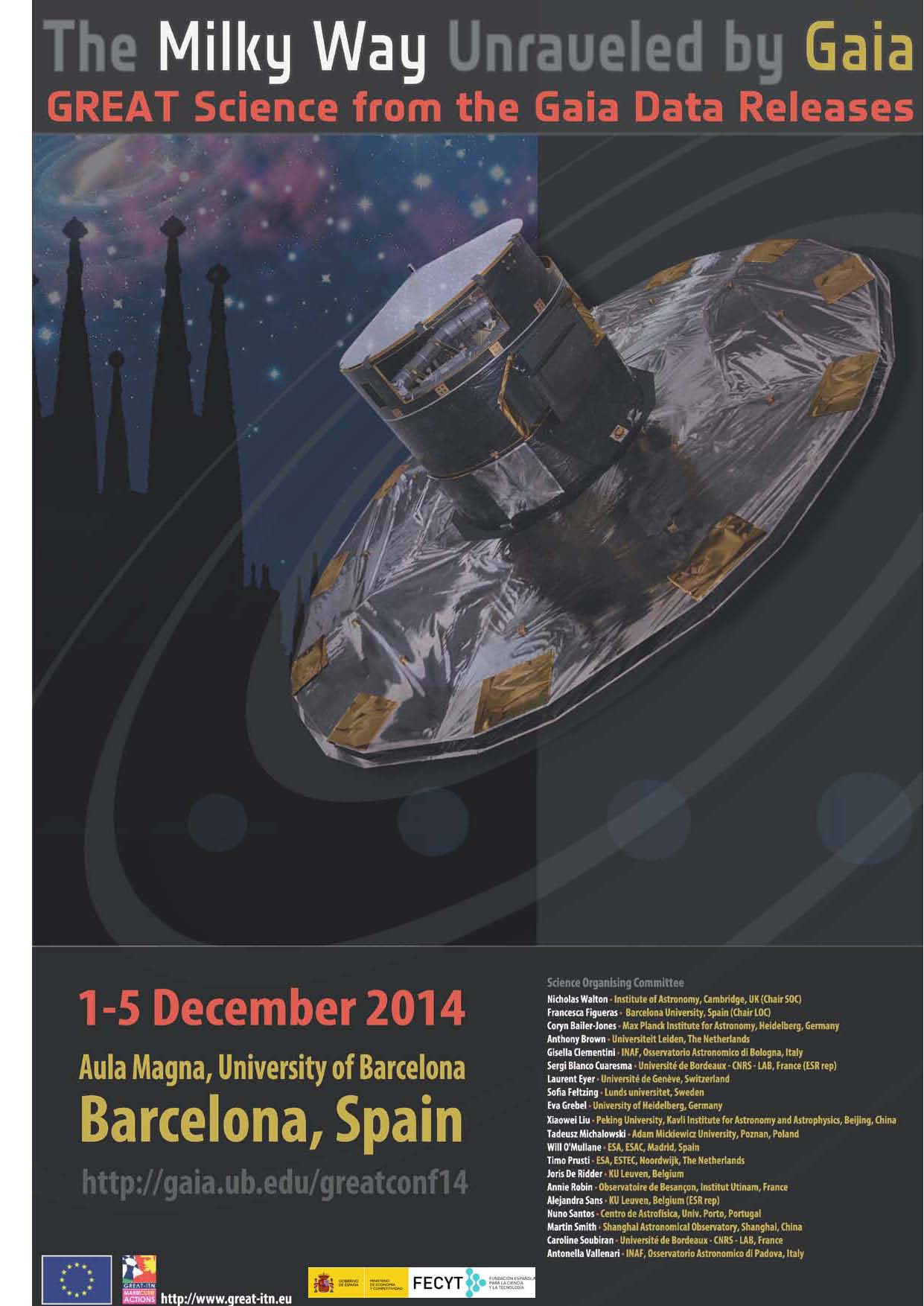Origin of the metallicity distribution in the thick disc
Maider Sancho Miranda, Bradley Gibson, Kate Pilkington, Christopher Brook, Patricia Sanchez-Blazquez (University of Central Lancashire, UK)
We examine how both the radial and vertical metallicity gradients change as a function of distance from the galactic plane and radius, along with an analysis of the stellar rotational velocities. We use a suite of chemo-dynamical simulations, realised as part of the MAking Galaxies In a Cosmological Context (MaGICC) project, the McMaster Unbiased Galaxy Survey (MUGS) and one galaxy using the Ramses-CH code. The galaxies span a range of masses, feedback prescriptions and initial conditions/assembly history. Our work reveals the radial metallicity gradients of the kinematically-defined disc stars to be negative in the mid-plane of the simulated discs but when we reach ~1 kpc above the plane the radial gradients become inverted (i.e. more metal-rich in the outskirts, relative to the inner parts of their respective discs). Such behaviour is consistent with that inferred from observational data (e.g. Cheng et al 2012; Carrell et al 2012). Our measurements of the vertical metallicity gradients show no clear correlation between them and distance from the galactic centre, but do find values of vertical gradients to be in good agreement with observations. Each of the simulations shows a decline inrotational velocity with increasing height from the plane of the galaxy. However, only one simulation shows a decline of similar a amount to observations of the Milky Way (e.g. Moni Bidin et al 2012). We make an exhaustive study to simulations to explain all these observational trends.
Topic revision: r1 - 2014-11-28 - SusanaBascon
Ideas, requests, problems regarding TWiki? Send feedback

